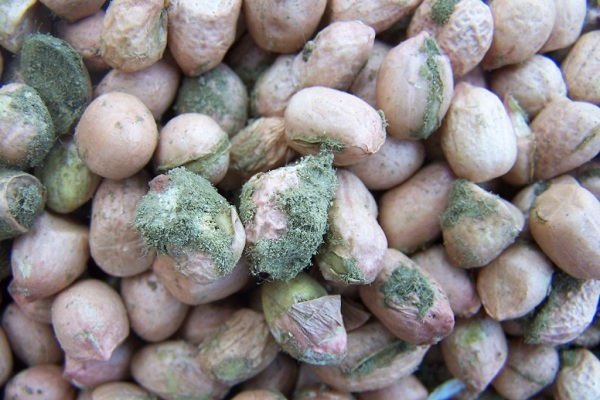
Aflatoxins, a health and economic hazard
In view of the dangers posed by substances known as aflatoxins in grains and the associated health hazards to mankind, the Ghana Standards Authority (GSA) has found it necessary to go round the country, beginning with the northern sector to launch and sensitise the public to the health hazards posed by aflatoxins and demonstrate how farmers and others in the value chain can minimise the dangers associated with them.
Aflatoxins are poisonous cancer-causing substances that are produced by certain moulds which grow in soil, decaying vegetation, hay and grains.
Advertisement
Animals fed with contaminated food can pass on aflatoxins-transformation products into other products for human consumption.
The sensitisation programme in the northern part of the country was followed with workshops in Wa and Tamale; and teaching demonstrations in Bolgatanga, Sunyani and Tamale.
The workshops targeted farmers and actors in the maize, groundnut and sorghum value chain whilst demonstration and sensitisation meetings also focused on processors and consumers of white maize.
The campaign is meant to significantly increase public awareness and how consumers can sort out and discard bad grains in their communities. Ultimately, the goal of the campaign is to identify public health strategies regarding the reduction of deaths associated with the consumption of aflatoxins-contaminated food and also outline an integrated plan that can help to effectively protect public health.
As a health hazard, aflatoxins threaten the agricultural sector. Output in the agricultural sector becomes adversely affected because aflatoxins-infected produce from the sector is unsafe for consumption.
This means that the unsafe portion of the output cannot be classified and considered safe for consumption, an unpleasant development that amounts to loss of a portion of the entire produce.
Another adverse effect is that it reduces the economic value of the output obtained at any given time.
If, for example, 120,000 tonnes of maize or groundnut is produced in the country but about a quarter is adversely affected by the presence of aflatoxins, then it means that a quarter of the total produce of 120,000, that is, 30,000 tonnes stands lost to the economy because of its unhealthy nature or, in this case, poor quality.
The implication of this is that aflatoxins constitute a threat not only to the health of people but to the agricultural sector and the economy of the country as a whole.
To make the campaign successful and effective, there is the need to make the public aware of the identification of gaps in current knowledge about acute and chronic human health effects of aflatoxins, surveillance and food monitoring, analytic methods and also the efficacy of intervention strategies.
Again, there is the need to identify certain factors that will make the campaign successful.
These are: first, to quantify the human health impact and the burden of disease due to aflatoxins exposure; second, to compile an inventory, evaluate the efficacy and disseminate results of ongoing intervention strategies; third, develop and augment the disease surveillance, food monitoring, laboratory and public health response capacity of affected areas and fourth, be able to develop a response protocol that can be used in the event of an outbreak of acute aflatoxins threat.
The health hazard associated with aflatoxins is real and ought to be tackled head-on.
The health hazard does not only affect Ghana but other developing countries in the world. For example, over five billion people in developing countries worldwide are at risk of chronic exposure to aflatoxins through contaminated foods.
Associated health hazards linked to aflatoxins pervade the developing world despite the fact that these effects could be mitigated or prevented with the current state of agricultural knowledge and public health practice.
As an example, Mexico is one country that has been able to eliminate aflatoxins and is willing to assist Ghana to do same.
Any effective public education campaign to address health hazards related to aflatoxins must include the collective efforts of diverse professionals who can help ensure its success.
This means that scientists with various backgrounds such as animal health and agriculture, as well as social scientists together with key public health officials and other stakeholders from aflatoxins-infected areas must be roped in to support the campaign.
Like Mexico, Ghana can also win the fight against aflatoxins so the earlier we strategise against it the better it will be for the whole country in terms of high agricultural productivity for maize, groundnut and sorghum, as well as good health and public safety.
The writer is Director of Corporate Communications, the Ghana Standards Authority.



